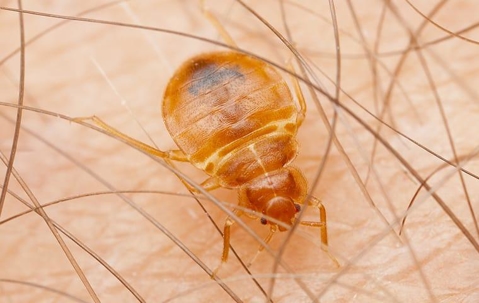Pest remediation is challenging for home and business owners in New Haven County for several reasons. One of them is that many critters are hard to figure out. Sometimes it’s obvious what is leading to invasions and what it will take to stop them. In other cases, the answers are unclear. While you try to piece things together, insects and creatures will have time to wreak havoc around your property.
Bed bugs are one species that mystify people. It seems like they appear randomly with no perceptible cause. These tiny insects withdraw blood from humans and animals, which culminates into red and itchy bumps. Since they rapidly reproduce at mass, it’s challenging to manage them. Learn more about bed bugs in New Haven County and how Rescue 1 Pest & Termite Control can intervene.
What Is The Main Cause Of Bed Bugs?
Common bed bugs in New Haven County are reddish-brown and 0.25 of an inch long. Aside from their misshapen midsection, their body parts are globular. Upon their heads, which are smaller than their tails, are two antennas. They walk about on six legs. Translucent young materialize from their pearly white eggs. If bed bugs are present, it’s because animals or humans are in the environment. These pests desire blood; it’s what they survive on.
Where Are Bed Bugs Found?
Given the details mentioned above, the popular belief that bed bugs are drawn to dirt is untrue. It’s also inaccurate that they only exist in domiciles. They prefer sleeping areas, but they’ll go anywhere an abundant amount of blood is. Pastures, schools, offices, bus stations, hotels, and airports are examples of public places these insects will target. Once they slip into your clothes or personal bags, they’ll be able to ride with you to your next destination.
Spots they’ll nestle in include:
- Fabrics
- Couches
- Upholstery
- Electronics
- Appliances
- Wood Trim
- Flooring
- Wallpaper
Key infestation signs are persistent bites on your body, stains, and odors. Anticipate finding close sets of patchy welts on your face, neck, legs, and arms. Outbreaks are often similar to rashes. Reddish-brown blemishes and blood drops will be on surfaces and fabrics, as well as black or brown fecal marks. The latter may be powdery or grainy in texture. Musty smells may be quite noticeable.
Do Bed Bugs Spread Disease? What Health Risks Do Bed Bugs Pose?
There aren’t any significant medical reports correlating bed bugs to disease transmission, but the critters can cultivate other health issues:
- Secondary Infections: Germs may get in when you cut your skin while scratching a bed bug bite. Bacterial infections like ecthyma, impetigo, and lymphangiti can develop.
- Mental Health: Impacted individuals are known to experience anxiety and insomnia.
- Allergic Reactions: Skin inflammation, nausea, and breathing complications are typical with bed bug allergy flare-ups.
- Anemia: With these insects constantly drinking blood, anemia is a possibility. Severe fatigue, paleness, and headaches are some primary symptoms.
What Home Remedies Get Rid Of Bed Bugs?
No “do it yourself” method or product will eliminate a bed bug infestation. You’ll have to take your intended remedy to each egg, nymph, and adult insect. That’s not feasible because they are so small and hide in a multitude of inaccessible spaces. Furthermore, many avenues are hazardous to use. Prevalent options such as dry ice, rubbing alcohol, and diatomaceous earth (DE) are dangerous to breathe near. They can result in fires and chemical burns too.
We at Rescue 1 Pest & Termite Control have industrial-grade treatments for bed bugs control that are highly effective and safe. Our expert technicians will utilize pump sprayers to address major insect hubs. Follow-up visits are available, and when you call today, you’ll get a free estimate. Don't wait, get started on our effective home pest control and commercial pest control services.

